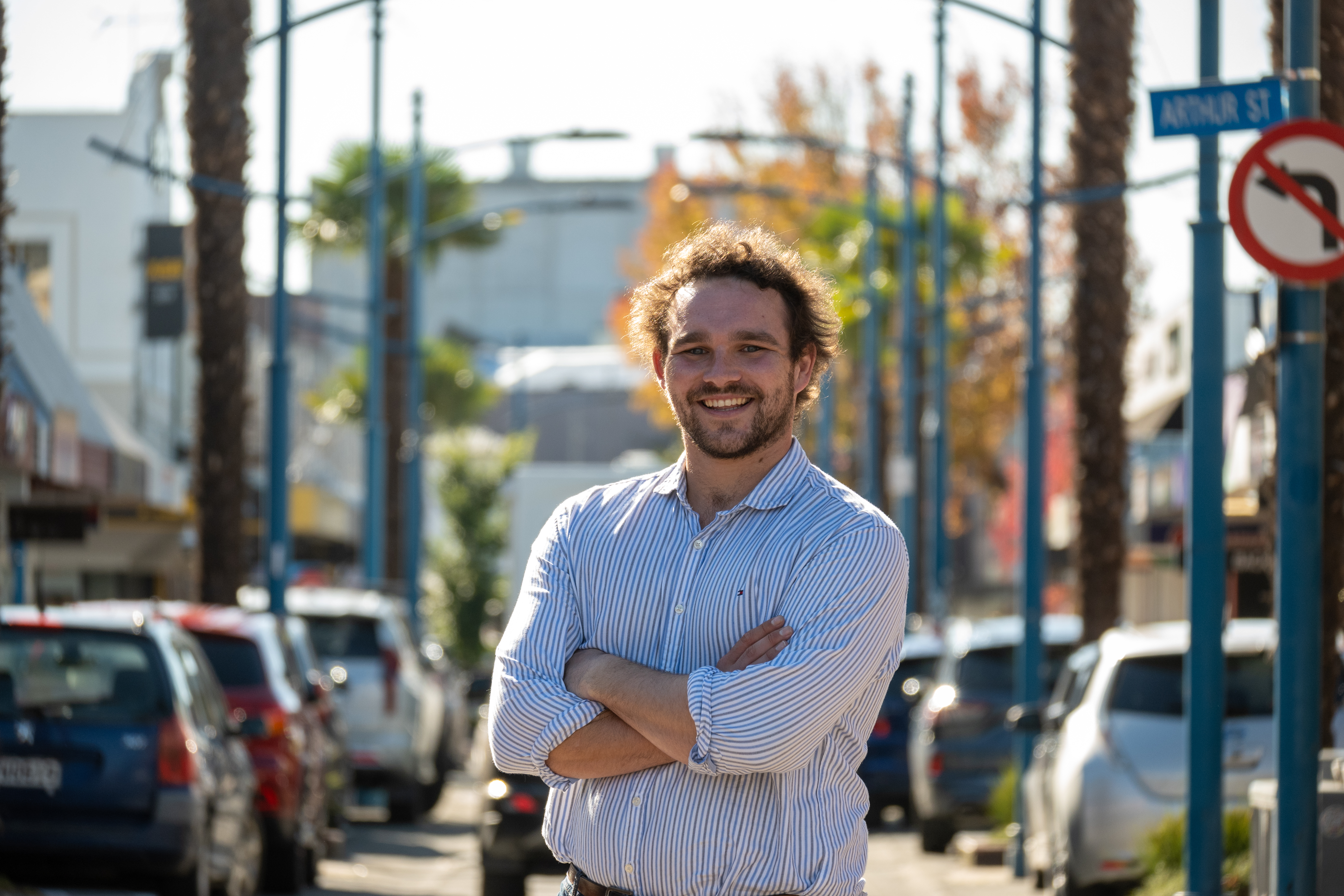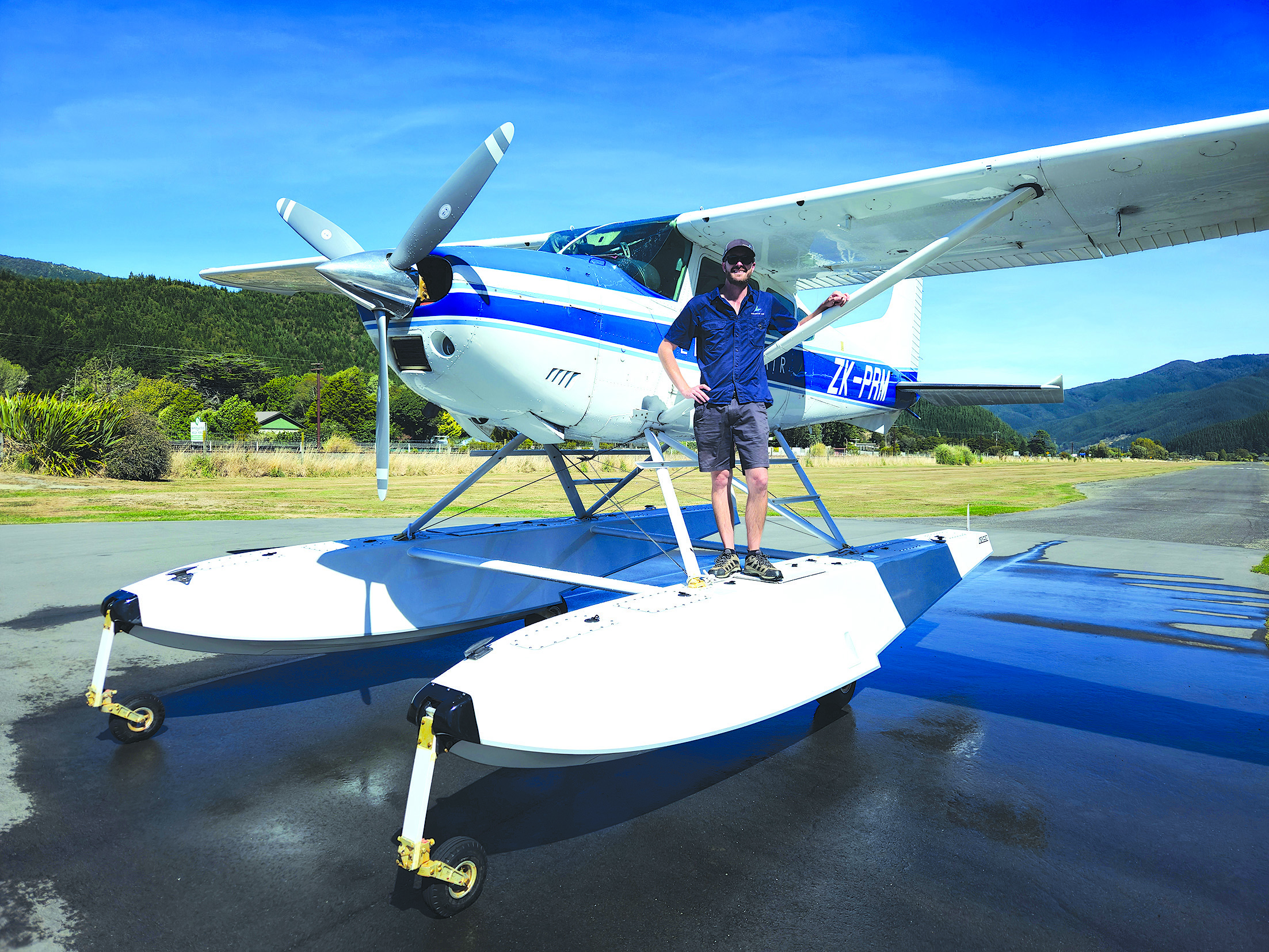Dockside deliveries for Sounds excursions


Pelorus Air’s new amphibious floatplane opens up more opportunities for Chris Marchant and his customers travelling to the Sounds.
A redeveloped amphibious floatplane has opened new travel opportunities to remoter parts of the Marlborough Sounds. William Woodworth talks to owner and pilot Chris Marchant about the move.
Pelorus Air owner and pilot Chris Marchant is not afraid of rust.
Former floatplanes operating in the Marlborough Sounds often fell foul of corrosion as they sat in the seas for their next trip.
But now a redeveloped Cessna 185 amphibious floatplane which can use land too means its owner doesn’t have to worry about water decay.
Pelorus floatplane flights can land on either runways, like the one at their Picton Airport base, or on waters throughout the Sounds.
The move opens many more avenues for travellers, Chris says.
“I know that former operators had real trouble with rust and corrosion leaving floatplanes in the water and had a few get wrecked by flipping over due to strong wind and waves.
“Having the amphibious option means we fly back here, wash her down and prevent that, or can drop in and fuel up in Wellington.
“So far, the lodges have been the most common customers but we’re hoping with time we are able to extend that to private baches or just people wanting personalised travel options.”
Pelorus Air takes scenic flights and connects people to the Sounds through a series of airstrips at Port Gore, Nopera Bay, D'Urville Island, Elie Bay, and Northwest Bay.
“We noticed there hasn’t been a floatplane out of Picton for the last five or six years, so saw an opportunity to open up and service new market with one of our own”, Chris explains.
“We can fly to any of the airstrips throughout the Sounds, but there really aren’t any airstrips in the Queen Charlotte Sound and only one in the Kenepuru, so having our new floatplane option opens up many new avenues for us to get people where they want to go throughout the Sounds”,
The Cessna, which has been in the family since the late 1980’s, required a few months of engineering to make it ready for its next adventure.
Amphibious floats came from the United States of America. While their weight limits the operational capacity of the Cessna, the plane is more about commercial flights, not cargo, Chris says.
“We looked at buying a brand-new floatplane, but it was much more economical for us to use the Cessna’s float kit and buy floats with a year lead.”
Engineering to put the floats in place began in September last year.
With an official operating date of 1 January 2024, there was a lot of work to be completed.
“There’s a lot more hydraulics and electrical wiring to go into amphibious floats, then go through all of the safety stuff. We officially started operating on the 1 January as a bit of a new toy for the New Year”.
“We had the safety certifier come on the 22 December, which is also my birthday, so that was a definitely stressful birthday,” Chris laughs.
Chris says that while it is still early days for their floatplane, they’ve had plenty of interest.
But the team are taking it cautiously while adapting to the wind and water patterns throughout landing sites.
“I’ve been flying around the Sounds for a long time and had lots of experience flying floatplanes in Canada, but combining the two is new because as anyone knows the Sounds can be tricky at the best of times.
“So, at the moment we’re still picking our days and flying only in good weather,” he says.
“Having amphibious floats was quite new to me with the extra weight, and in Canada commercially you fly straight floats with more shore facilities prepared for floatplanes,
“The floatplane is more challenging because once you’re on the water you’re a boat without reverse and it always wants to point into the wind.
”But it’s very satisfying flying because you’re basically flying until you’re tied up on the dock or back in the hangar.”
Despite the floats, hydraulics and wheels adding taking up just under 600kg of the operational weight limits, Chris says four people, or three with luggage, fit perfectly in the floatplane.
Chris has also found demand from people simply wanting the novelty of going on a floatplane for a scenic tour.
“We can land wherever the demand is, but for example we had people heading out to Nopera, right next to Raetihi and Hopewell Lodges, which has an airstrip, but they were more than happy to pay more for the floatplane for the experience.
“We’re connected to the lodges and the cruises, and so we’d love to have more options for those travellers for them but for trips from Picton to the outer Sounds, D’Urville Island is 15 minutes by plane so the time and cost compared to driving or boating makes what we’re doing really competitive and efficient.”
